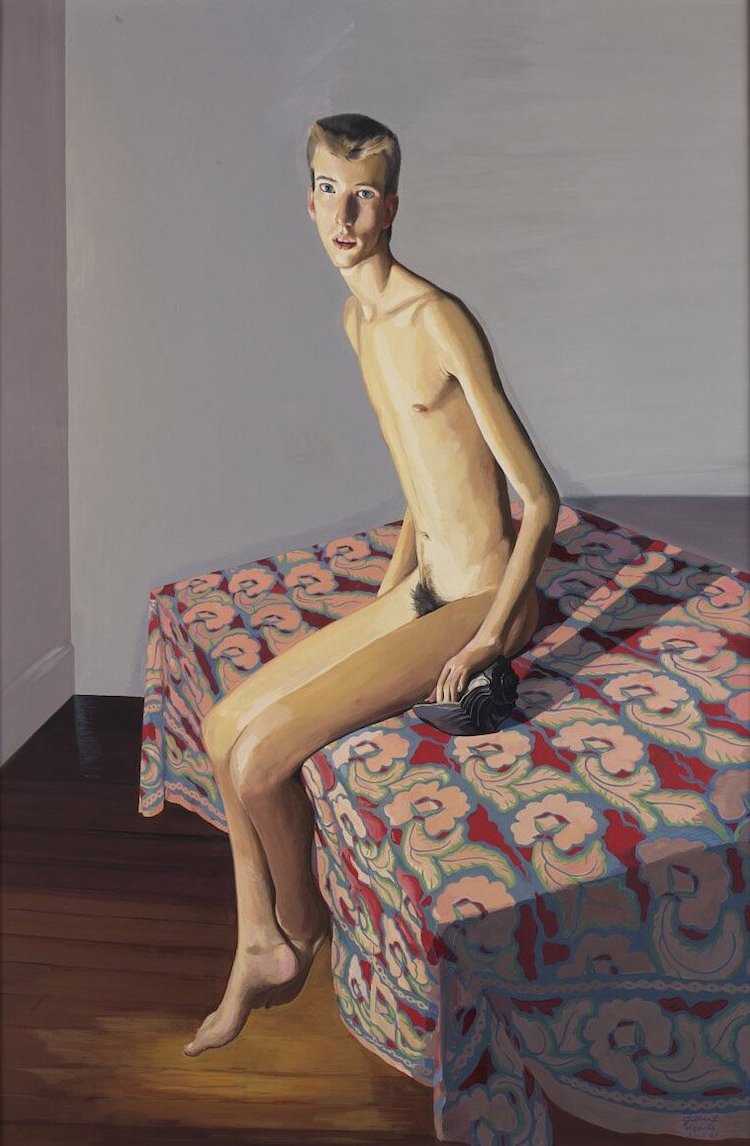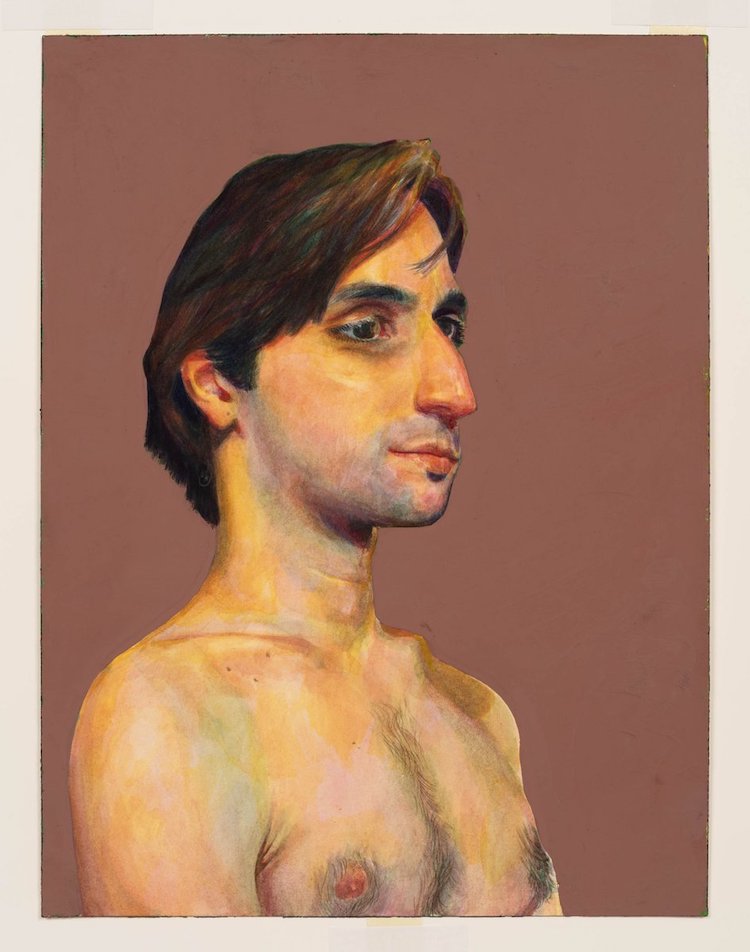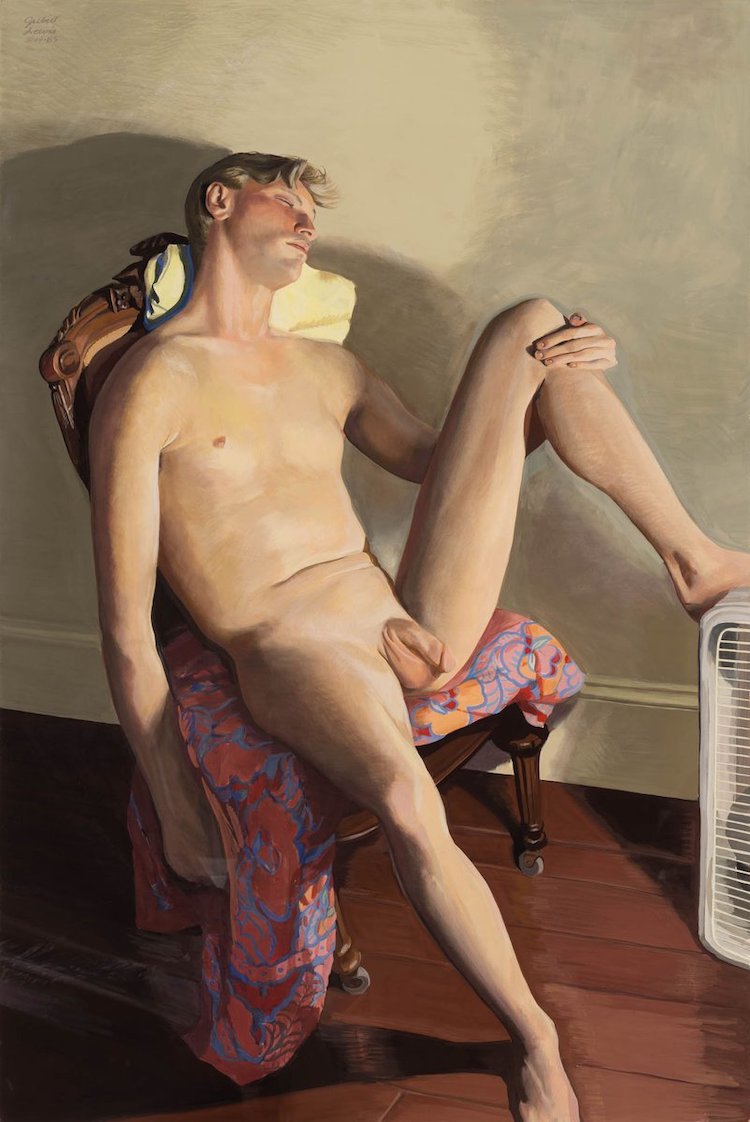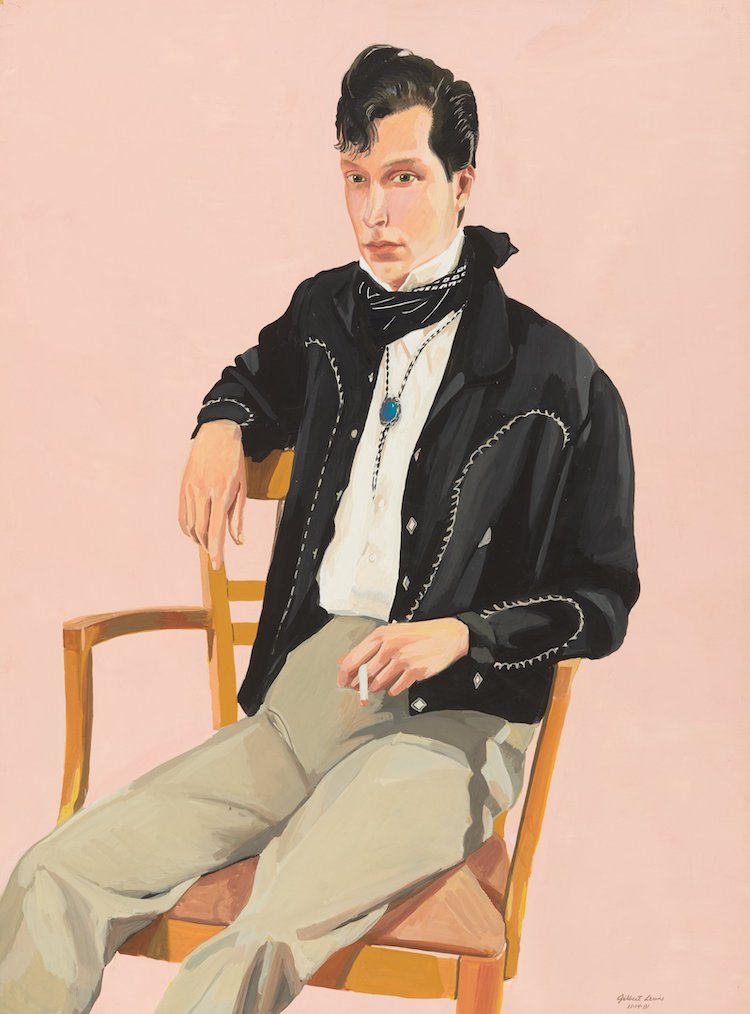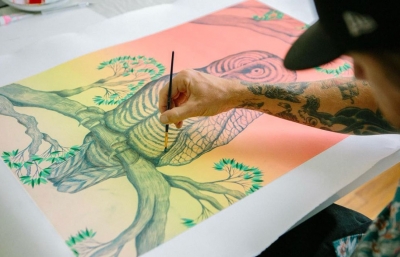Kapp Kapp is pleased to present Gilbert Lewis: Portraits 1979–2002, the gallery’s second survey of Lewis’s impressive oeuvre of queer portraiture and the first exhibition examining his practice in New York since his 2004 show, Becoming Men, at the Leslie-Lohman Museum for Gay and Lesbian Art. For the first time, works from this exhibition will be reunited, on loan to Kapp Kapp, in context with paintings and drawings spanning the depth of Lewis’ more-than-four decade career.
Lewis, a beloved fixture of the Philadelphia art community, studied and worked in Philadelphia through the 1970s and 1980s until the early aughts. Known for his tender and perceptive portraits of the young men of his community, Lewis devoted his practice to the study of the figure, celebrating gay bodies and the gay experience, in spite of the greater public disdain for queer lives through the AIDS epidemic. With a selection of over thirty paintings and drawings, uncovered and collected slowly over the two years since the gallery’s last exhibition of Lewis’ work, Portraits 1979–2002 includes two seminal paintings, the largest ever produced by the artist; Swimmer, 1984, from the collection of the Leslie-Lohman Museum of Art; and Untitled (Basking Nude), 1985.
Immersed in the language of medieval and Renaissance Italian masterworks through his fascination with the sculpture galleries of the Pennsylvania Academy of Fine Art, where he received his degree in painting in 1968, Lewis became enamored with the interpretation of the body. Eventually winning a travel grant to Europe before his graduation, Lewis studied the collections of Florence’s Uffizi and Madrid’s Prado, among others, taking with him a desire to express narrative through the figure, adjusting the plane, color, texture, to imply a life and consciousness beyond time.
Most apparent in Lewis’ 1981 gouache on paper painting, Untitled (Rockabilly), in which his sitter is suspended in space, smoking a cigarette, still and dangling before a baby pink background; The discontinuous break from the figure in the foreground to the stark blankness of the background creates an equally discontinuous temporal and spatial dimension, pausing time for his figure altogether. Drafting each work with his sitter before him, many of Lewis’ figures are rendered with asymmetrical proportions or noticeably elongated limbs, his unbound perspective modifying a narrative beyond the reality in front of him. Like the Italian masters Lewis found so mystifying, the many personalities of his world remain just as he rendered them, defying the effect of age, time, and space, which, for a community devastated by the toll of AIDS, echoes doubly as a monument.
Lewis found equal obsession in the detail of his tableaus, making spectacle of the colors and patterns surrounding his figures, highlighting architectural details or elements of his sitter’s personal style. As in Untitled (Colonial), 1981, Lewis calls specific attention to the figure’s costume and the boards of the hardwood floors, or Untitled (Multicolor Nude), c. 1980, where the paintings on the walls and stereo behind the figure draw nearly the same visual curiosity, if not more. Among the works sourced for this exhibition was a gouache study Lewis produced as a wallpaper sample, a vibrantly colored Hiroshige-esque aquatic scene, which Kapp Kapp will produce as a wallpaper for the first time, installed within the gallery.
Gilbert Lewis: Portraits 1979 – 2002 will be on view at Kapp Kapp through February 25.




